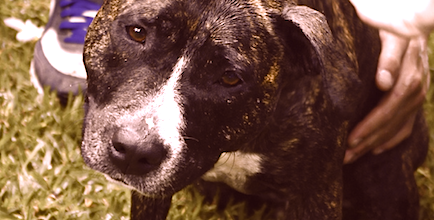Can Dogs Eat Mango? Everything You Need To Know.
Key Points: Mangoes: those juicy, tropical fruits that transport your taste buds to an exotic paradise. But can your furry friend partake in this delectable delight too? So Can Dogs Eat Mango? Mangoes Are Dog-Friendly, though there are some very important safety factors to acknowledge before feeding them to your dog. Yes, mangoes are generally…

- Yes, mangoes can be a healthy treat for dogs, packed with vitamins, fiber, and hydration benefits.
- Remove the pit and skin, and feed in moderation due to natural sugar content, especially for dogs with diabetes or weight concerns.
- Introduce mango slowly to watch for allergies; avoid dried mango due to high sugar and additives.
Mangoes: those juicy, tropical fruits that transport your taste buds to an exotic paradise. But can your furry friend partake in this delectable delight too?
So Can Dogs Eat Mango? Mangoes Are Dog-Friendly, though there are some very important safety factors to acknowledge before feeding them to your dog.
Yes, mangoes are generally safe for dogs when prepared and offered responsibly. However, like any treat, there are some considerations to keep in mind. In this guide, we’ll explore the world of mangos for dogs, discussing their safety, nutritional benefits, and ways to incorporate them into your dog’s diet.
- The Nutritional Value of Mangoes
- The Benefits of Mangoes for Dogs
- Safety Considerations When Feeding Mangoes to Dogs
- Which Dogs Should Avoid Mangoes?
- Could My Dog Be Allergic to Mangoes?
- So, Can My Dog Eat Mangoes?
- How Much Mango Can a Dog Eat?
- What If My Dog Has Eaten Too Much Mango?
- Serving Mangoes to Your Dog
- What Are Some Other Fun Mango Treats?
- Can Dogs Eat Mango Skin?
- Can Dogs Eat Mango Pit (Seed)?
- Can Dogs Eat Dried Mango?

Don’t leave your pet’s safety to chance
Sign up for Petful recall alerts today.

The Nutritional Value of Mangoes
Before we delve into the details, let’s take a moment to appreciate the nutritional profile of mangoes:
- Vitamins and Antioxidants: Mangoes are rich in vitamins A, C, and E, which can promote immune system health, eye health, and overall wellbeing.
- Dietary Fiber: Mangoes are a great source of dietary fiber, which can aid in digestion and regulate bowel movements.
- Natural Sugars: Mangoes contain natural sugars, so they should be offered in moderation, especially to dogs with diabetes or weight concerns.
- Hydration: Mangoes have a high water content, contributing to your dog’s hydration.
The Benefits of Mangoes for Dogs
Incorporating mangoes into your dog’s diet can have several potential advantages:
- Nutrient Boost: Mangoes can provide your dog with essential vitamins and antioxidants that support their overall health.
- Digestive Health: The fiber in mangoes can promote healthy digestion and may help with constipation or diarrhea.
- Hydration: The water content in mangoes can assist in keeping your pup hydrated, especially on hot days.
- Treat Variety: Mangoes can be a refreshing change from traditional dog treats.
Safety Considerations When Feeding Mangoes to Dogs
While mangoes are generally safe for dogs, it’s crucial to follow these safety guidelines:
- Remove the Pit: The mango pit (seed) contains a substance called amygdalin, which can release cyanide when broken down. Always remove the pit and offer only the flesh to your dog.
- Portion Control: Due to their natural sugar content, mangoes should be fed in moderation, especially to dogs prone to weight gain or with diabetes.
- Choking Hazard: Mango chunks should be appropriately sized to prevent choking, particularly for smaller breeds.
- Allergies: As with any new food, introduce mangoes gradually to watch for any adverse reactions or allergies.
Which Dogs Should Avoid Mangoes?
While mangoes are generally safe for most dogs, certain situations warrant caution:
- Dogs with Diabetes or Blood Sugar Issues: Monitor mango intake for dogs with diabetes, as the natural sugars can affect blood glucose levels.
- Overweight Dogs: Due to their sugar content, mangoes should be limited for overweight dogs. Consider offering them as an occasional treat.
- Allergies: Some dogs might be allergic or intolerant to mangoes. Introduce them slowly and monitor for any adverse reactions.
- Pancreatitis-Prone Dogs: While mangoes are not typically high in fat, any new food can potentially trigger pancreatitis in susceptible dogs. Introduce them gradually and observe for any adverse reactions.
Could My Dog Be Allergic to Mangoes?
Yes, although it’s relatively rare, dogs can be allergic or intolerant to mangoes, just as with any food. Food allergies in dogs can manifest in various ways, such as gastrointestinal symptoms or skin-related issues.
Symptoms of a Mango Allergy or Intolerance in Dogs:
- Skin Issues: Allergic reactions might include itchiness, hives, redness, or rashes. Watch for excessive scratching or licking, especially around the paws, ears, or face.
- Digestive Upset: Vomiting or diarrhea might occur if your dog is intolerant or allergic to mangoes.
- Facial Swelling: Swelling around the eyes, lips, ears, or throat can indicate an allergic reaction.
- Coughing or Difficulty Breathing: These could be signs of a severe allergic reaction, especially if there’s swelling in the throat.
- Chronic Ear Infections: Repeated ear infections could be a sign of an underlying food allergy.
- Behavioral Changes: Some dogs might become lethargic, anxious, or exhibit other behavioral changes when experiencing discomfort or an allergic reaction.
What to Do if You Suspect an Allergy:
- Remove the Allergen: If you suspect mangoes are causing the issue, stop feeding them to your dog and avoid any treats or foods that contain them.
- Consult Your Veterinarian: If your dog shows symptoms of an allergic reaction, consult with a veterinarian. They can provide guidance on treating immediate symptoms and discuss potential allergy tests or dietary changes.
- Allergy Testing: If allergic reactions are recurring, your vet might recommend an allergy test to identify specific allergens affecting your dog.
- Monitor for Cross-Contamination: Ensure that other foods or treats aren’t contaminated with mangoes if you believe they’re causing an allergic reaction.
Remember, while it’s relatively rare for dogs to be allergic to mangoes, it’s always good to introduce any new food gradually and monitor your dog for any adverse reactions.
So, Can My Dog Eat Mangoes?
Yes, your dog can enjoy mangoes as a delicious and nutritious treat when introduced responsibly and in moderation. Their vitamins, antioxidants, and fiber content make them a valuable addition to your dog’s diet. Be sure to remove the pit and cut the fruit into appropriate-sized pieces based on your dog’s size.
How Much Mango Can a Dog Eat?
Mangoes should be given as an occasional treat and should not replace your dog’s regular meals. Treats, including mangoes, should comprise no more than 10% of your dog’s total daily caloric intake.
Here’s a guideline for serving sizes of mango for dogs based on their size, expressed in 1/2 inch cubes:
- Toy Breeds (up to 6 pounds): 1 ½ inch cube
- Small Dogs (7-20 pounds): 2 to 3 ½ inch cubes
- Medium Dogs (21-50 pounds): 4 to 6 ½ inch cubes
- Large Dogs (51-80 pounds): 6 to 8 ½ inch cubes
- Extra-Large Dogs (over 80 pounds): 8 to 10 ½ inch cubes
Adjust the serving size based on your dog’s specific needs, activity level, and overall health. If you’re unsure, consult with your veterinarian.
Remember to peel the mango, remove the pit, and cut it into manageable, bite-sized pieces to avoid any choking hazards or digestive issues, especially for smaller dogs.
What If My Dog Has Eaten Too Much Mango?
If your dog has consumed an excessive amount of mangoes, it’s important to watch for signs of digestive upset or unusual behavior. While mangoes are generally safe, overindulgence can potentially lead to issues.
Possible Immediate Symptoms of Overconsumption:
- Diarrhea: This is one of the most common symptoms if a dog overindulges in any food, including mangoes.
- Vomiting: Some dogs might vomit if they’ve eaten too many mangoes or ate them too quickly.
- Stomach Discomfort: Your dog might show signs of discomfort, such as whining, unusual postures, or reduced activity.
What to Do:
- Stay Calm: Panicking won’t help the situation. Stay calm and focus on observing your dog and determining the best next steps.
- Do Not Induce Vomiting Unless Advised: It’s essential not to induce vomiting unless explicitly advised to do so by a veterinarian.
- Contact Your Veterinarian: If your dog is showing signs of distress or discomfort, get in touch with your veterinarian. They can provide guidance based on the amount consumed and your dog’s size and health.
- Monitor Your Dog: Even if your dog seems fine, keep a close eye on them for the next 24-48 hours. Look for any delayed symptoms or changes in behavior.
In most cases, if a dog has eaten too many mangoes, they will experience mild digestive upset, and the symptoms will pass on their own. However, if the dog consumed an extremely large quantity or if they’re showing severe symptoms, it’s crucial to seek veterinary attention.
Serving Mangoes to Your Dog
Now that you know the benefits and precautions, let’s explore some delightful ways to serve mangoes to your furry friend:
- Fresh and Raw: Offer small, peeled mango slices or pieces as a tasty treat. Be sure to remove the pit and cut them into appropriate sizes for your dog.
- Frozen Mango Chunks: Freeze mango pieces for a refreshing summer snack. Many dogs enjoy the cool, fruity treat.
- Mango Dog Smoothie: Create a dog-friendly smoothie by blending mango with plain yogurt and a banana. Pour it into your dog’s dish for a tasty, probiotic-rich treat.
- Mango-Infused Toys: Stuff some fresh or frozen mango pieces into your dog’s favorite treat-dispensing toy for a fun, interactive experience.
- Homemade Mango Dog Treats: Explore dog-friendly recipes that incorporate mangoes. From biscuits to muffins, there are plenty of creative options to try.
- Mixed with Regular Food: Sprinkle some fresh or mashed mango pieces on top of your dog’s regular food to add a burst of flavor and nutrition.
What Are Some Other Fun Mango Treats?
If you’re looking to add more variety to your dog’s diet, consider these delightful mango treat ideas:
- Mango and Coconut Frozen Pops: Blend mango pieces with unsweetened coconut milk and freeze the mixture in molds or ice cube trays for a tropical delight.
- Mango and Chicken Jerky: Create a tasty treat by marinating chicken jerky in mango puree. Dehydrate for a flavorful, chewy snack.
- Mango and Peanut Butter Mash: Mix finely mashed mango with a small amount of peanut butter (free of xylitol) for a soft and tasty treat.
- Mango and Oatmeal Cookies: Combine rolled oats, grated mango, and a binding agent like egg or mashed banana to make simple dog cookies. Bake until they’re crispy.
- Mango Gelatin Gummies: Use unflavored gelatin, mango puree, and water to make gummy treats. Ensure there’s no added sugar or artificial sweeteners.
- Mango and Blueberry Smoothie: Blend mango pieces with blueberries and water for a refreshing, antioxidant-rich treat.
- Mango and Sweet Potato Bites: Mix finely grated mango with cooked and mashed sweet potato for a nutrient-packed snack.
Can Dogs Eat Mango Skin?
It’s generally best to peel the mango before offering it to your dog. While the flesh of the mango is safe and nutritious, the skin can be tough to digest and might cause digestive discomfort. To ensure the safest and most enjoyable experience for your dog, remove the skin and cut the mango into manageable pieces.
Can Dogs Eat Mango Pit (Seed)?
No, dogs should not eat the mango pit. The pit, or seed, of a mango contains a substance called amygdalin, which can release cyanide when broken down in the digestive system. Cyanide is toxic to dogs and can cause serious health issues, including difficulty breathing, vomiting, and even death in severe cases.
In addition to the risk of cyanide poisoning, mango pits are also a choking hazard and can cause blockages in the digestive tract if ingested. They are hard and can be difficult for a dog to digest, potentially leading to an intestinal blockage that may require surgical intervention.
Therefore, when feeding mango to your dog, it is crucial to remove the pit and only offer the flesh of the fruit. Always supervise your dog while they are eating and be sure to cut the mango into appropriately sized pieces to prevent choking.
Can Dogs Eat Dried Mango?
Dogs can technically eat dried mango, but it is not the best option for a treat, and here’s why:
- High Sugar Content: Drying fruits concentrates the natural sugars, making dried mango much higher in sugar content compared to its fresh counterpart. Excessive sugar can lead to obesity, diabetes, and dental problems in dogs.
- Additives and Preservatives: Commercially available dried mango often contains added sugar, preservatives, or other additives that are not recommended for dogs.
- Caloric Density: Dried mango is more calorically dense than fresh mango, which can contribute to weight gain if fed in large quantities.
Digestive Upset: Some dogs might experience digestive upset, including diarrhea or stomach discomfort, from the higher concentrated sugars and fiber in dried mango.
Frequently Asked Questions (FAQ)
Are mangoes toxic for dogs?
No, mangoes are not toxic to dogs, but the pit must be removed as it contains cyanide and can cause choking or an intestinal blockage. The flesh is safe in moderation and provides vitamins A, C, and fiber.
How much mango can I give my dog?
Small dogs can have a few small pieces, while larger dogs can eat up to a few slices, but it should be an occasional treat. Since mangoes are high in natural sugar, feeding too much can lead to weight gain or digestive issues.
Why do dogs love mango?
Many dogs enjoy mango because of its sweet taste, juicy texture, and natural sugars, making it a tasty and refreshing treat. The soft flesh is easy to chew, which makes it appealing to most dogs.
Can mango cause diarrhea in dogs?
Yes, mangoes contain fiber and natural sugar, which can cause diarrhea or stomach upset if eaten in excess. Feeding in moderation and introducing it slowly can help prevent digestive issues.
Curious about what other foods dogs can eat? Check out these related articles below:







